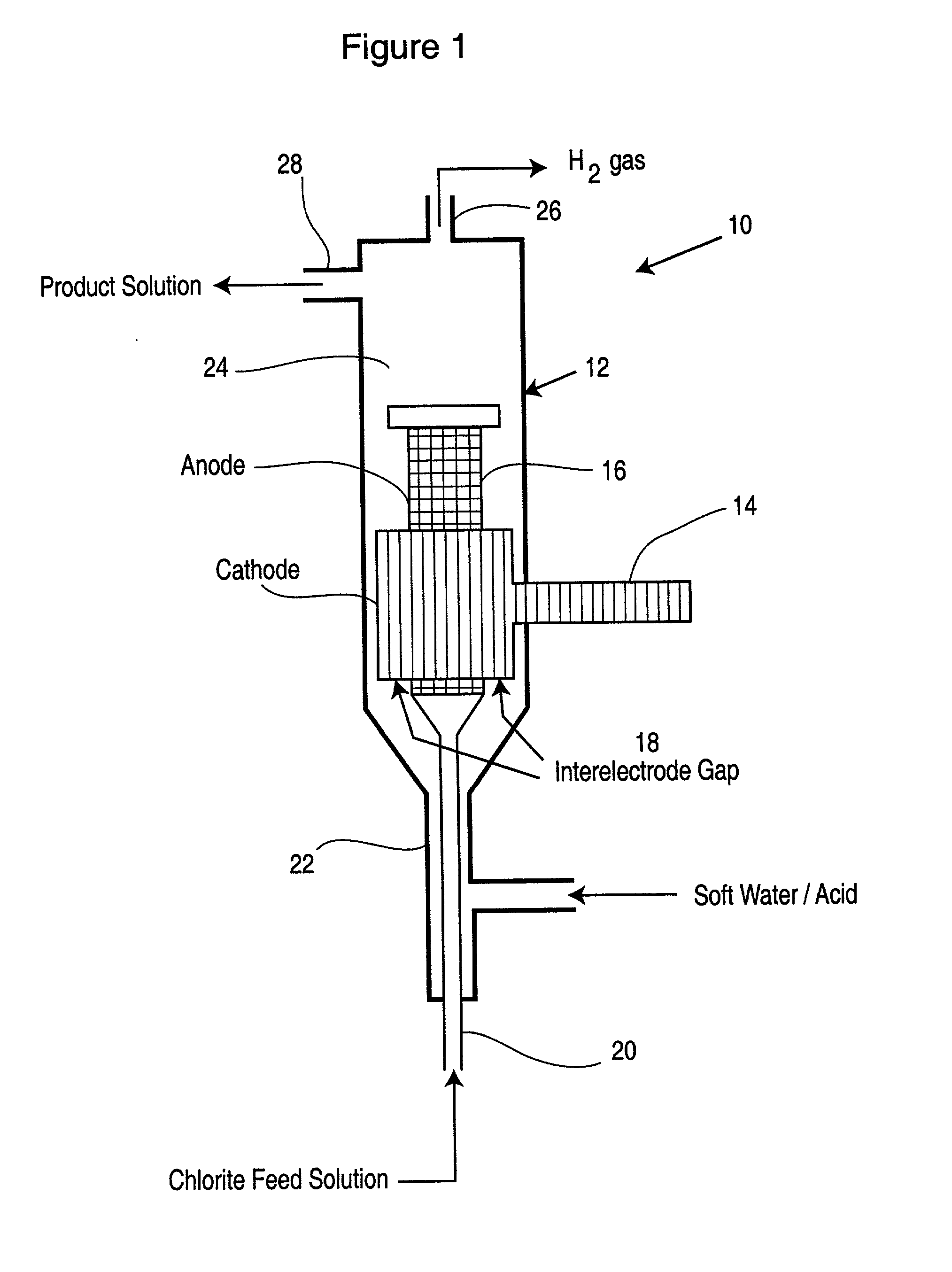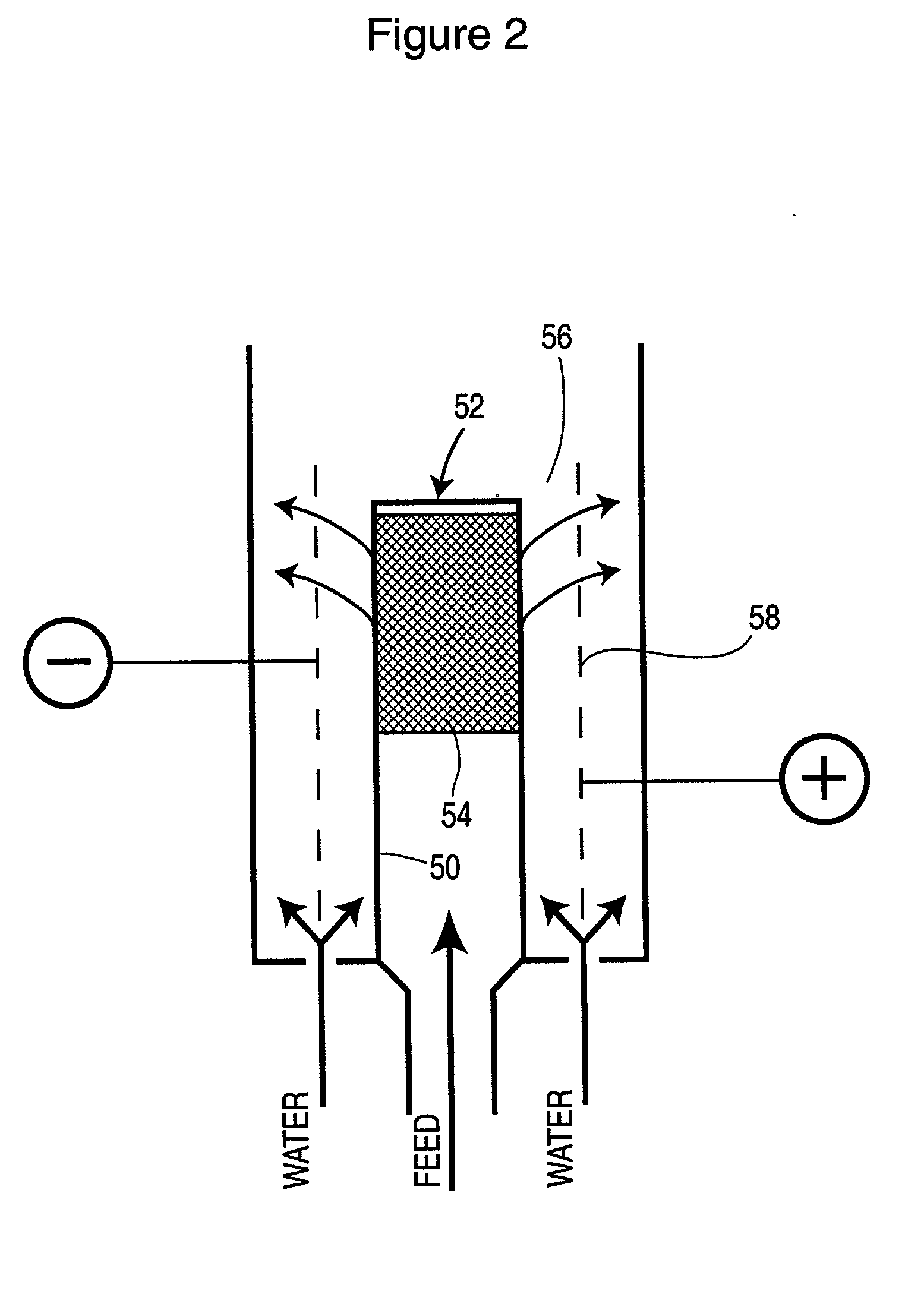Electrolytic process for the production of chlorine dioxide
a technology of electrolysis and chlorine dioxide, which is applied in the direction of electrolysis components, instruments, optics, etc., can solve the problems of increasing the overall cost of chlorine dioxide production by single-pass process, negatively affecting process economics, and divided electrochemical cells, so as to improve the conversion of chlorite ions to chlorine dioxide and contribute to the overall process
- Summary
- Abstract
- Description
- Claims
- Application Information
AI Technical Summary
Benefits of technology
Problems solved by technology
Method used
Image
Examples
example
[0050] This Example illustrates the process of the invention.
[0051] The electrochemical cell employed in this Example consisted of two concentric electrodes as depicted in FIG. 1. The cathode encircled the anode leaving a nominal 1 mm gap. The cathode was made from a thick, solid titanium cylinder with low surface area. The high surface area anode consisted of a perforated platinized titanium cylinder, capped at the top, and covered by a thin layer of platinized titanium wool commercially sold as TySAR WP-12 by Olin Corporation (the superficial surface area of the anode was approximately 120 cm.sup.2).
[0052] Formulated sodium chlorite solution containing 9.5 g / L sodium chlorite and 9.9 g / L sodium chloride, having pH of about 11.1, was fed at a rate of 10.8 mL / min into the anode cylinder and exited through the TySAR into the gap between the electrodes. Soft water having pH of 2.19 was fed at a rate of 0.5 L / min into the bottom of the cell and was flowed upwardly into the interelectro...
PUM
| Property | Measurement | Unit |
|---|---|---|
| concentration | aaaaa | aaaaa |
| pH | aaaaa | aaaaa |
| concentration | aaaaa | aaaaa |
Abstract
Description
Claims
Application Information
 Login to View More
Login to View More - R&D
- Intellectual Property
- Life Sciences
- Materials
- Tech Scout
- Unparalleled Data Quality
- Higher Quality Content
- 60% Fewer Hallucinations
Browse by: Latest US Patents, China's latest patents, Technical Efficacy Thesaurus, Application Domain, Technology Topic, Popular Technical Reports.
© 2025 PatSnap. All rights reserved.Legal|Privacy policy|Modern Slavery Act Transparency Statement|Sitemap|About US| Contact US: help@patsnap.com



